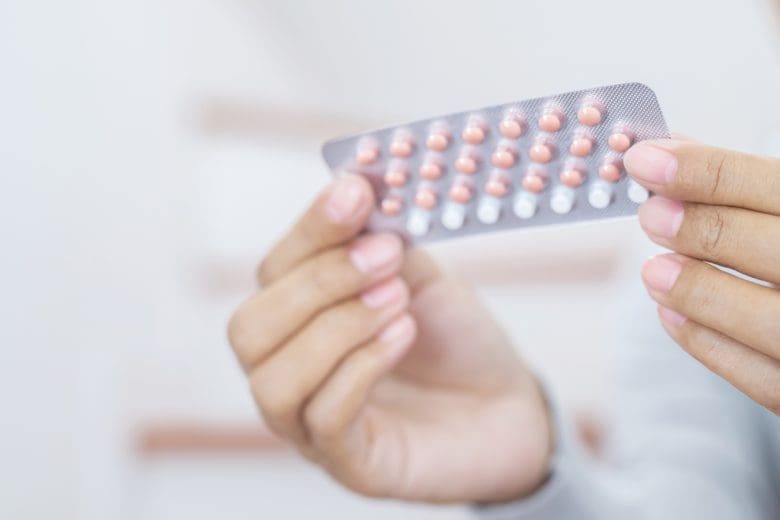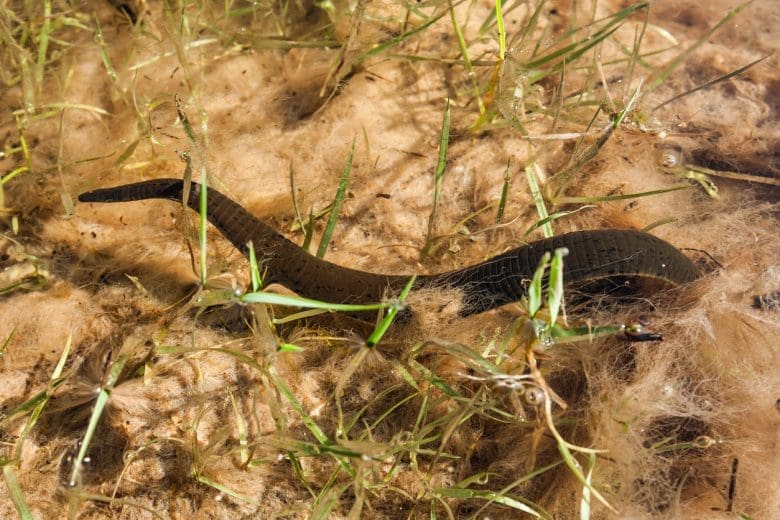Research August 7, 2020
This Is What Happens When Freshwater Leeches Are Exposed to Synthetic Estrogen
By Sumeep Bath, Communications Manager
You might be surprised to learn that estrogens—like the ones used in birth control pills—could be found in your local river or lake. And that’s likely bad news for those creatures that live within.
Where does synthetic estrogen (or 17α‐ethynylestradiol [EE2] to its friends) in our fresh water come from? EE2 usually originates in urine from women who take birth control pills or hormone replacement therapies and then excrete it. Next step? They enter lakes and rivers via wastewater treatment plants that are not equipped to remove them, and where they may not completely break down.
Those of you who have been paying attention will remember that back in 1999, scientists at IISD Experimental Lakes Area (IISD-ELA) set out to discover the impacts that EE2 has on the health of lakes—including the organisms (such as fish and, yes, leeches) that live within them—once it enters the ecosystem.
Something Smells Fishy Here
That research revealed some surprising impacts on freshwater life.
For example, researchers found that the estrogen entering the water interfered with fathead minnows’ ability to reproduce and led to a near extinction of that population. Once the minnow numbers had dropped, there was an unexpected cascading response with other aquatic species responding to the loss in food supply or predation.

Clearly, the risks of estrogens in the surface waters had been underestimated.
"But What About the Leeches?" You Ask
Well, the researchers wanted to discover whether EE2 had an impact on how the leech community was composed, how abundant the species are, their growth rates, the size of their reproductive organs, and the production of their cocoons.
They already knew that leeches are highly sensitive to metals in aquatic systems. This means they could act as a useful indicator of the quality of freshwater environments and the presence and impacts of other contaminants like estrogens.
Each month, they set up traps (which were actually pickle jars baited with liver) for the leeches along the shoreline of Lake 260 at IISD-ELA (to which the synthetic estrogen had been added) and then identified, weighed, and measured them. (Fun fact: Did you know that you can anesthetize leeches with club soda? They went through a lot of cans of it those summers.)

They then compared those results with leeches from with reference lakes at IISD-ELA (to which they had not added any synthetic estrogen) and to results collected before the whole-lake experiment started.
This is what they found:
- When it comes to the size and abundance of the leech populations, very little changed. In fact, it seems like adding EE2 to the lakes in which the leeches lived had no real impact on numbers, the number of species, or community composition.
- Even so, there were some impacts on the leeches’ sex organs. The mass of the epididymis (a tube behind the testes), decreased due to the presence of synthetic estrogen. On the other hand, the length of some male organs (such as the testes, prostate and the penis sheath), as well as the size of the sperm sacs, increased in those leeches exposed to EE2.
- When it comes to the size of the female sex organs, some parts increased in size after synthetic estrogen was added.
- All these changes to the male and female sex organs could have an impact on the number of leeches in future generations.
- Also, although overall cocoon production was similar, the process actually occurred earlier in the lake to which EE2 had been added.
You can read more about this research and what it revealed about the impact of synthetic estrogen on freshwater leeches in a recent paper published by the Society of Environmental Toxicology and Chemistry.
You know that ground-breaking freshwater research you just read about? Well, that’s actually down to you.
It’s only thanks to our generous donors that the world’s freshwater laboratory—an independent not-for-profit—can continue to do what we do. And that means everything from explore what happens when cannabis flushes and oil spills into a lake, to how we can reduce mercury in fish and algal blooms in fresh water—all to keep our water clean around the world for generations to come.
We know that these are difficult times, but the knowledge to act on scientific evidence has never been more important. Neither has your support.
If you believe in whole ecosystem science and using it to bring about real change to fresh water around the globe, please support us in any way you are able to.